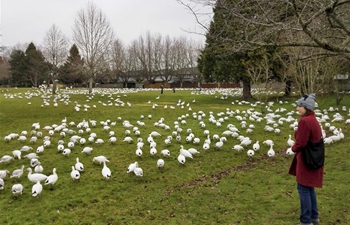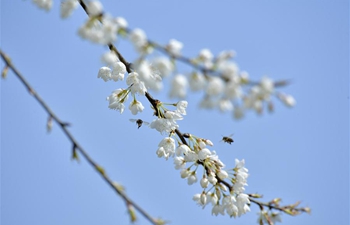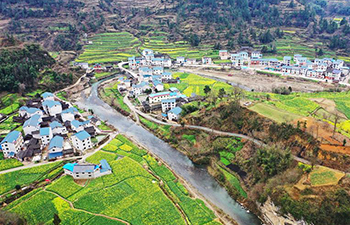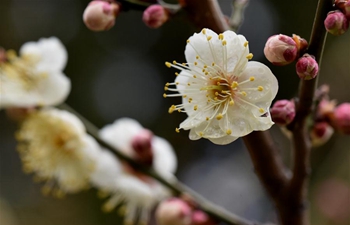BEIJING, March 7 (Xinhua) -- How tall can a plant grow? A latest Chinese research has shown that hydraulic traits can serve as important predictors of maximum plant height and species distribution patterns.
Based on 11 dataset of 1,281 plant species from 369 sites worldwide, researchers from South China Botanical Garden built multiple models linking plant height, hydraulic traits and water.
They research in the journal Science Advances that taller species from wet habitats show greater xylem efficiency and lower hydraulic safety, wider conduits, lower conduit density, and lower sapwood density. All these factors were associated with habitat water availability.
Xylem is the vascular tissue in plants that moves water and nutrients to various parts of the plant such as shoots and leaves, and also help form the woody element in the stem of plants.
Hydraulic safety refers to the ability of a tree to withstand drought conditions where there is little water and air is getting pulled up the tree. And sapwood is the living, outermost portion of a woody stem or branch.
The researchers said people used to think taller plants might transport water less efficiently because of the longer distances. Instead, according to the study, taller plants have a higher hydraulic conductivity across species, a main strategy used to compensate for the high evaporation demand by leaves and the increased height.
According to the researchers, the study, supported by funding sources including the National Natural Science Foundation of China, revealed different hydraulic patterns between within and across species, as most of the hydraulic theories on plants were based on data within species.
They said coordination between plant height and xylem hydraulic traits was aligned with habitat water availability across the Earth's terrestrial biomes, noting that such coordination could be useful in predicting future species distribution under climate change.















